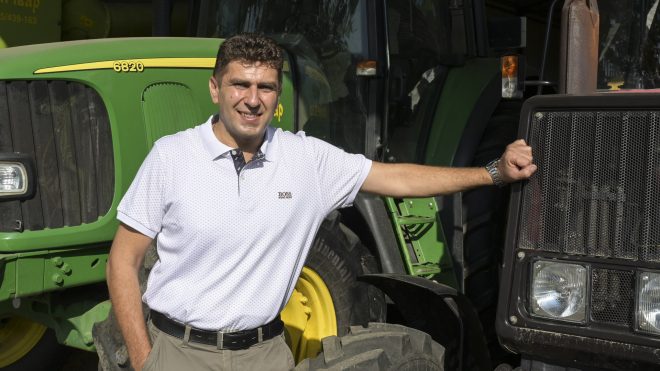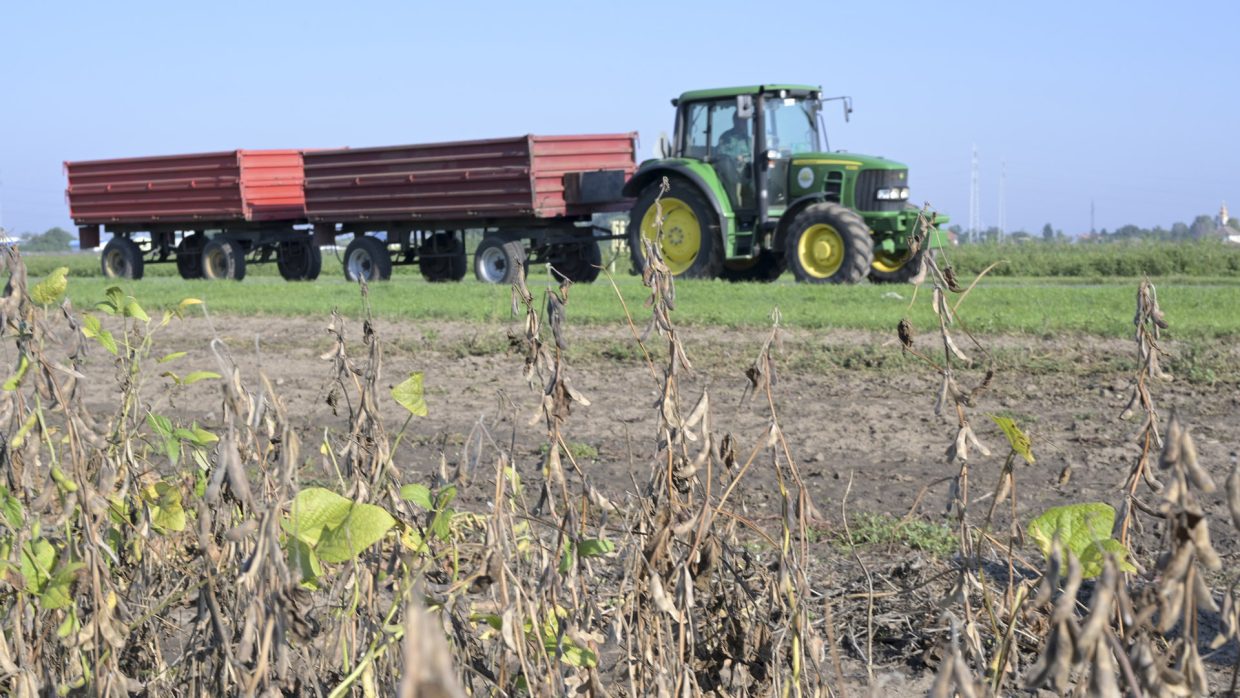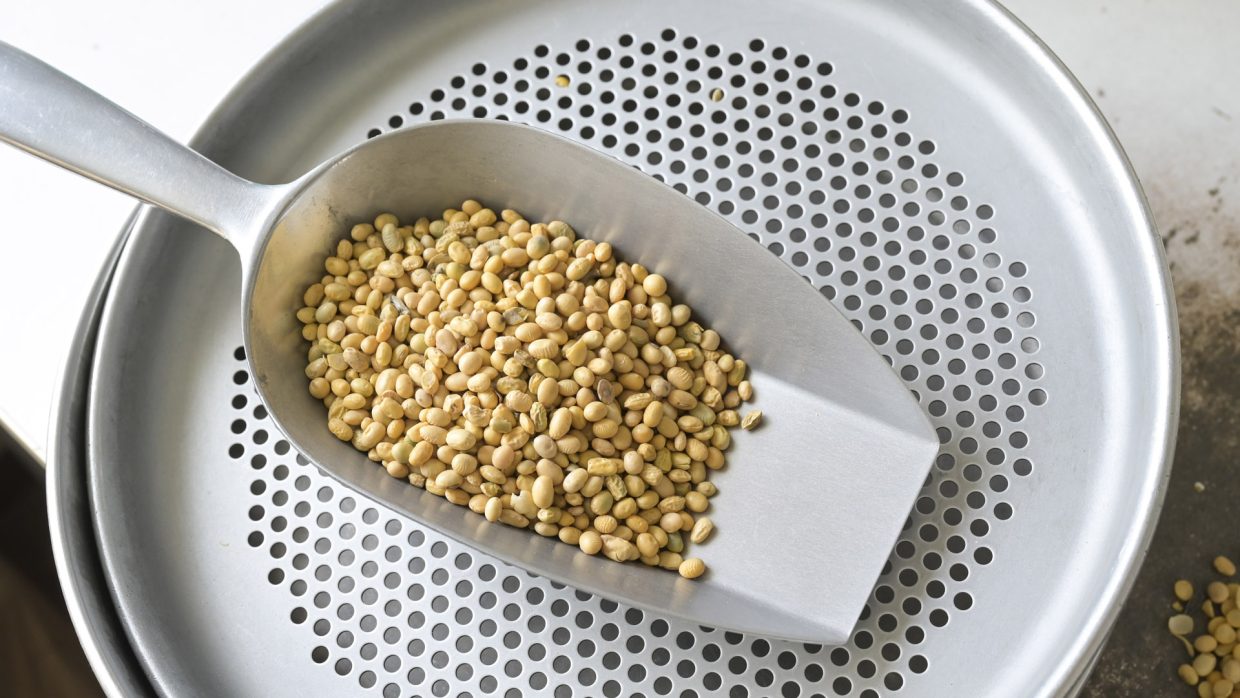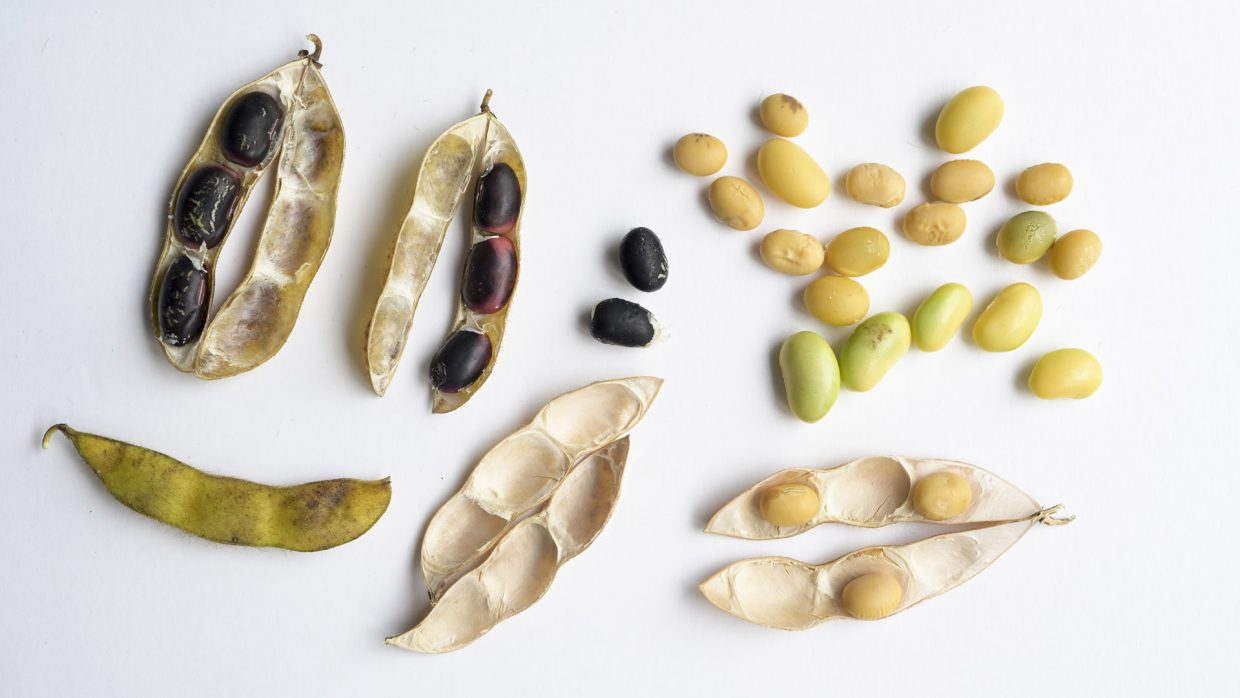On a September morning in the Serbian province of Vojvodina, one of the most fertile regions in Europe, signs of autumn are already in the air. The night’s accumulated moisture on the fields slowly evaporates away as workers get busy. Horse-drawn carts pass by piled high with stacks of onions and red peppers, while old Soviet-designed tractors and combines continue to be used in the field alongside more modern models imported from the West.
Vlada Vukicevich intends to harvest today, and the combine is ready and waiting in the shed next to his house. But the ever-alert 45-year-old farmer still takes time to treat himself to a quick mocha before renowned agricultural adviser, Bane Jevremov stops by. And while sipping his mocha, Valda says he has a lot to thank Bane for. “I had grown soya before,” – but never in such a sustainable way.”

Bane Jevremov is a larger-than-life man who knows virtually every farmer, agricultural trader, and processor in Voijvodina. He works for Donau Soja [translation: “Danube Soya”], a Vienna-based non-governmental organisation with a goal to transform Europe’s protein supply by means of GMO-free and sustainable soya production.
“Our farmers are already achieving very good results in soyabean cultivation, even without genetic engineering,” says Bane, nodding appreciatively to Vlada.
Up-and-coming soya

Soya is quite the up-and-coming crop and the last 50 years has seen more than tenfold increase in annual production. The International Grains Council in London estimates the global supply of soya at 387 million tonnes for 2022/23, and four-fifths of this will be processed into animal feed.
More than 80% of the world’s soy comes from Brazil, the USA, and Argentina, all three countries relying predominantly on genetically modified seeds. In South America, much of the cultivation takes place on cleared rainforest land, often causing displacement and conflicts over the land’s use. On top of this, there are the consequences of long transport routes around the globe.
The world’s main consumer of soyabean is China, to the tune of over 96 million tonnes. This is followed by the European Union, whose consumption totals 35 million tonnes, most of which is from Brazil. Germany imported around 3.6 million tonnes of soyabeans in 2021, of which 1.6 million tonnes also came from Brazil.
In Brazil, one tonne of soya grown on deforested land produces 5.6 metric tonnes of greenhouse gasses, compared to an average of 0.82 metric tonnes in Europe. And when the beans are grown in Serbia, due to the short transport distances in the country, according to Donau Soja, it drops even lower – to only 0.28 tonnes.

Local cultivation for more sustainability
In addition to the short distances, the region’s climate is balanced more favourably for soya, which enables methods for sustainable cultivation. Vlada has tested several local varieties developed specifically for cultivation in Serbia, which are a good match for the local climate and soils. and he was able to increase his yields while using the same amount of arable land, water, and fertiliser. As a legume, soya also benefits soil fertility.
Out in the field, Bane pulls out a plant and points to tiny, whitish-grey balls on the roots – nitrogen – captured from the air and stored in the soil. This improves the yield of following crops like the wheat and maize which Vlada grows in rotation with his soyabeans to help reduce pest and disease burden. Nitrogen fixation means he’s able to save on mineral fertiliser, to the tune of 100kg/ha per year – particularly helpful with the war in Ukraine skyrocketing fertiliser prices – as well as reducing his greenhouse gas emissions on farm.
Vlada has been proactive in using mechanical methods to reduce his use of pesticides. But what excites this farmer the most is that Donau Soja connects him with the right buyers. “Demand is on the rise and the price is right too,” Vlada exclaims. In Serbia, soya is a driving force for development, explains Jovana Djisalov, in charge of external relations at Donau Soja in Novi Sad.

Soya situation in Europe
This year 300,000ha of soyabeans were grown in Serbia, compared to around 250,000 in previous years. Soyabean cultivation is also increasing in other European countries, 10 years ago, 17% of the soya consumed in Europe was grown in Serbia – these days the figure has reached 22%. The majority is sourced from non-EU countries, especially from the south-eastern countries in and around the Balkans. However, new varieties and changes in climate have led farmers in Austria and Germany to discover the crop for themselves too. Nevertheless, Ukraine bears the title of the main producer in Europe, and despite the war, Ukrainian farmers were able to harvest 3.6 million tonnes in 2022.
And most of its soya exports are transported overland, for example, via Poland into the EU. “The demand for soya from Europe is seeing an enormous increase,” says Jovana. “It’s driven mainly by the large retail chains offering more vegetarian foods in response to consumers’ increased awareness of feed and food production.”
In Austria, all laying hen farms have been using Donau Soja soya in their feed for 10 years, according to the organisation. And so far, they have saved one million tonnes of greenhouse gasses as a result; something that a large city in Europe with 100,000 inhabitants emits per year. In the meantime, German retailers are offering meat or eggs produced with certified soya from Europe.
Farmers, traders, agricultural cooperatives, transport and logistics companies, and processors have been benefiting from the boom in demand – some even planning to double their capacities, according to Donau Soja.
Certified premium product
Certification from Donau Soja helps growers to develop and market a premium product and as a result, increases their income The certification also demonstrates compliance to sustainability criteria along the supply chain. “Three hundred of our 400 farmers are now certified in growing according to the organisation’s criteria,” says Marko Nenadić, logistics manager at the cooperative processor Uljarice-Bačka, – which has been working with Donau Soja for three years.
To meet the standards for certification, the cooperative must maintain close contact with farmers to provide them with knowledge and further education as well as ensure good record keeping. “This helps improve quality, all the way down to the strict hygiene requirements for transporting the beans,” Marko adds.
Customers throughout Europe
On average, Uljarice-Bačka has produced 10,000 tonnes of certified beans per year. The cooperative exports one-third of that to Austria and 10% to Germany, but Denmark and Norway are also among the buyers. “Access to these markets is significantly easier through certification – and sometimes we get a better price,” says Marko.
Another thing that helps is the very strict contamination standards for genetically modified (GM) soya in Serbia, which are higher than the usual standards in Europe.
Soyabean cultivation as animal feed has been promoted in Serbia since the 1970s and the days of the former Yugoslavia. “Only in the past 15 years has interest in domestic soyabean increased in the rest of Europe,” says Vuk Dorđević, an expert in variety development at the Institute of Field Crops and Vegetables in Novi Sad. “Since then, we have been working continuously on the development of suitable varieties.”
The first local variety was developed at the institute in 1979, now there are a total of 176 varieties, offering growers a wide range from which to choose the most suitable variety.
Scientists have recently bred an award-winning black bean variety that is particularly suited for use in the pharmaceutical industry, as well as in the field of healthy foods. Over the past decade, however, there has been a focus on developing drought-resistant varieties.
And it’s no wonder that Vlada is so pleased with his yields in Serbia, too, despite this year’s drought. He looks at his watch, after all he intends to harvest today, before quickly climbing into his machine and driving off.








